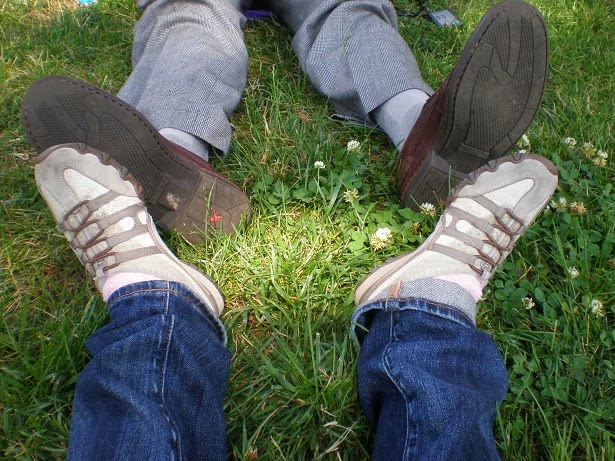As human beings, we all exist and interact within the context of some sort of system. Whether that be family, work, school, one's community or some other organizational setting. So, becoming more aware and understanding our role and impact within that context is an important first step towards a lifestyle of intent. The chart to the left consists of a few basic terms that can help us to evaluate the quality of the systems we may be part of.
Systems, whose
characteristics correspond to the terms listed on the left of the chart, tend
to be less robust or resilient than those characterized by the terms on the
right. As a result, their overall performance
may not be as strong, and they are at greater risk for partial or complete
failure, during or in the wake of a disruption or catastrophic event. However, as we begin to make the conceptual
shift from the terms on the left to those on the right, we become more equipped
to make choices that better support the creation of healthy, abundant and resilient systems
that perform well and for the benefit of all their members.
Detailed
definitions for each of these terms are below.
- cultivation – to show care and consideration for all parties to a transaction or exchange; to treat fairly.
- degeneration – a process of depleting resources without replenishing them, or doing so at a rate greater than they can reasonably be replaced before endangering, adversely disrupting or destroying the “system” from which they have been taken or “extracted”.
- diversity – the state of having or being composed of differing elements, both living and non-living, within a group, organization or system.
- eco-efficiency – tends to be a piecemeal approach primarily concerned with doing things as economically as possible, by minimizing or decreasing inputs in order to increase outputs or value (e.g. using less gas while increasing car mileage). Results may also be tracked within the strict time frames consistent with those typical of business cycles (e.g. monthly, quarterly, annually, etc). (see McDonough, W. & Braungart, M. (2002) Cradle-to-Cradle, Chapter 2, p.51-53, 61-67).
- eco-effectiveness – a holistic approach that takes into consideration the quality of engagement or outcome in a transaction, (e.g. worker or customer safety, health, well-being, the environment, etc.). Value is derived over much longer time frames than are typical of business cycles (e.g. several years, decades, a generation) (see McDonough, W. & Braungart, M. (2002) Cradle-to-Cradle, Chapter 3 for more in depth discussion of this term).
- eco-intentionality – to deliberately make decisions or take actions consistent with an eco-effective approach.
- exploitation – to make use of meanly or unfairly for one's own advantage and potentially to the detriment of others.
- extraction – to take without giving back; a transaction that fails to exchange something of equal or complimentary value.
- holistic – relating to or concerned with considering a system in its entirety rather than just its individual components in isolation.
- mindfulness – the state of having conscientious awareness of other elements, both living and non-living, within a system or one’s environment.
- regeneration – a process that actively or deliberately seeks to replenish, build or cultivate. This approach tends to contribute to the overall health, well-being and resilience of a system by promoting complexity and diversity. Regenerative processes also work in both the short and long terms (see Roland, E. & Landua, G. (2013) Regenerative Enterprise: Optimizing for Multi-capital Abundance – version 1.0, 8 forms.org, p.20.)
- resilience – the ability to recover or continue functioning in the midst or wake of an event or situation that causes the failure of critical infrastructure, disrupts key relationships or access to key resources.
- system – “a collectivity of units which are functionally differentiated and engaged in joint problem solving with respect to a common goal. The members or units of a system may be individuals, informal groups, complex organizations, or subsystems. . . . Each unit in a system can be functionally differentiated from every other member. All members cooperate at least to the extent of seeking to solve a common problem or to reach a mutual goal. It is this sharing of a common objective that binds the system together.” (adapted from Rogers, E.M. & Shoemaker, F.F. (1971) Communication of innovations: a cross-cultural approach. New York, The Free Press, p.28).
General Characteristics of Resilient Systems
- all elements (large and small) each have a part to play (or primary function) that contributes to the system’s overall, effective performance
- each element should also be able to perform other functions, in addition to their primary ones
- there should be redundancy for all “mission critical” system functions, in the event of the inevitable disruptions or failures that can occur. Mission critical functions are those that are absolutely necessary to a system’s well-being or performance, in achievement of its overall goals.


















